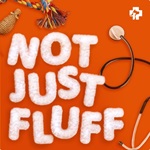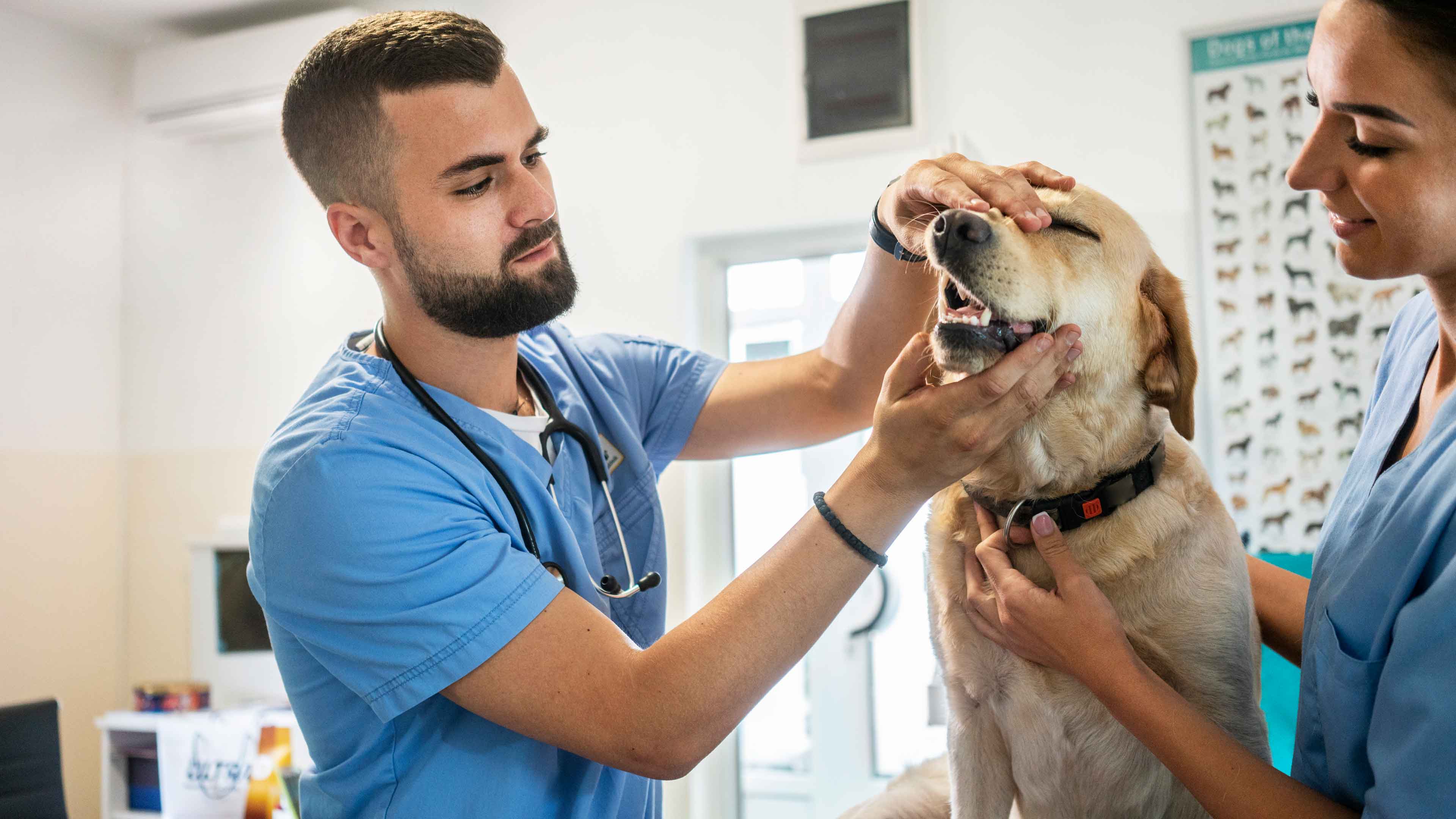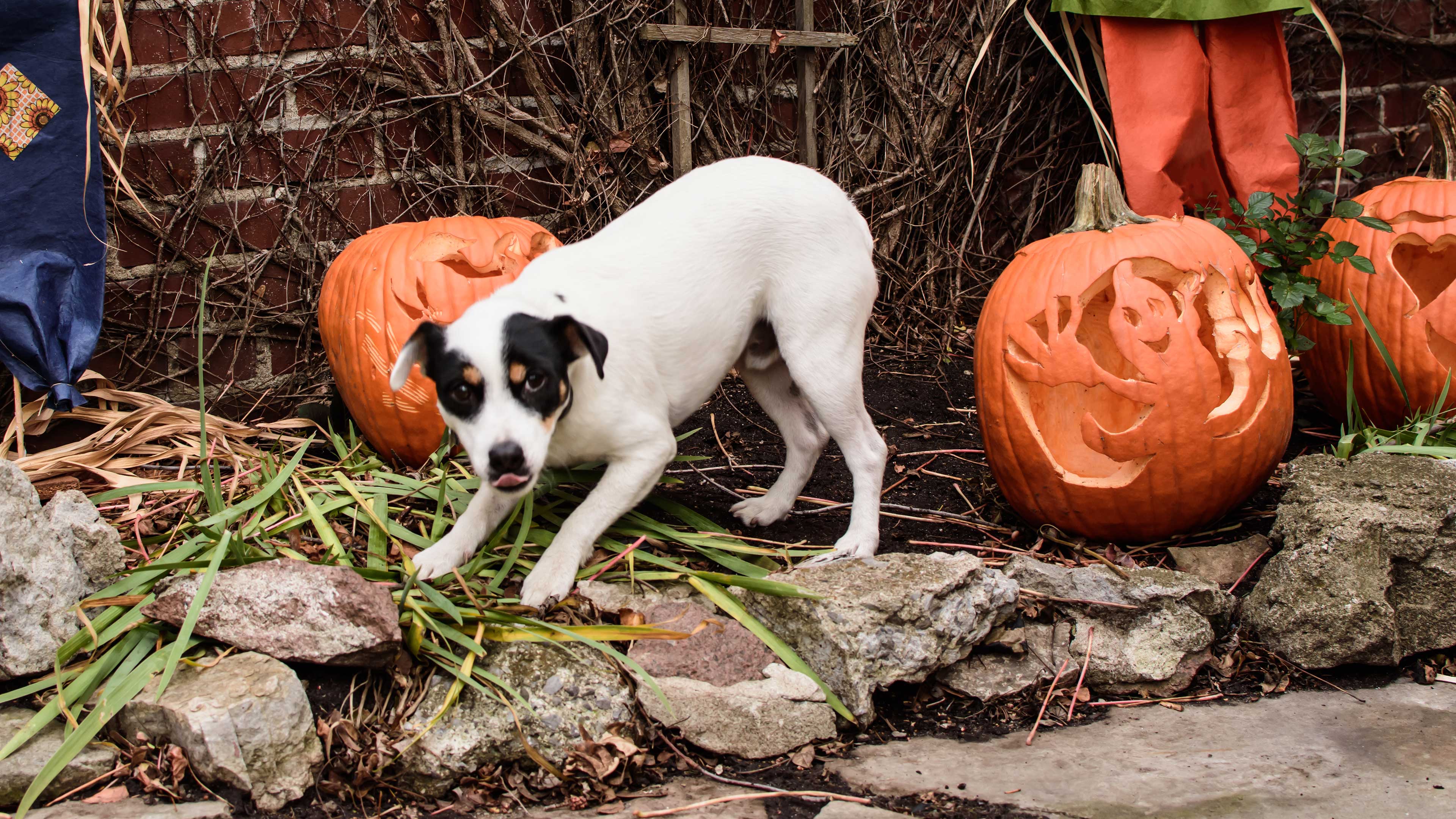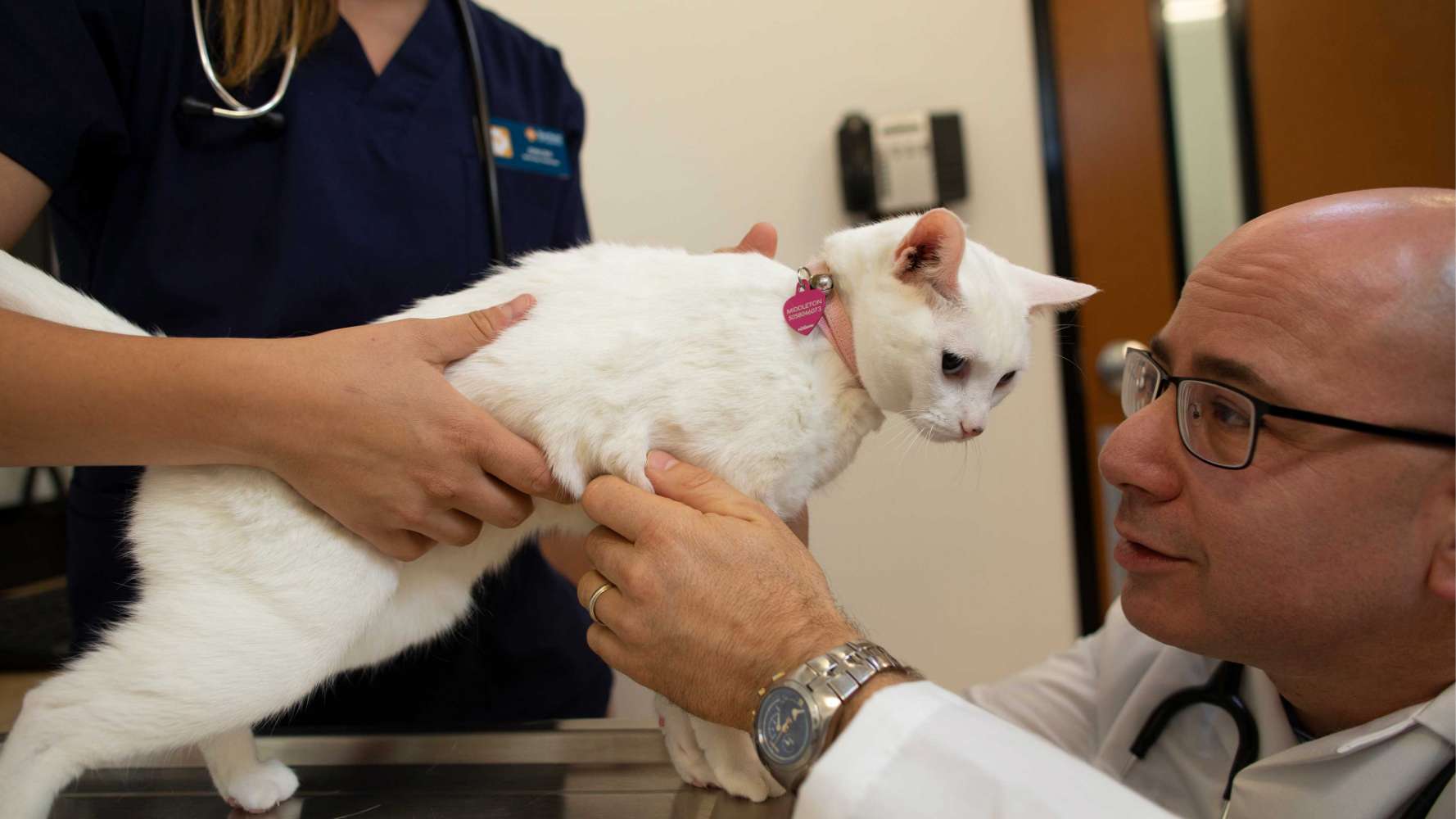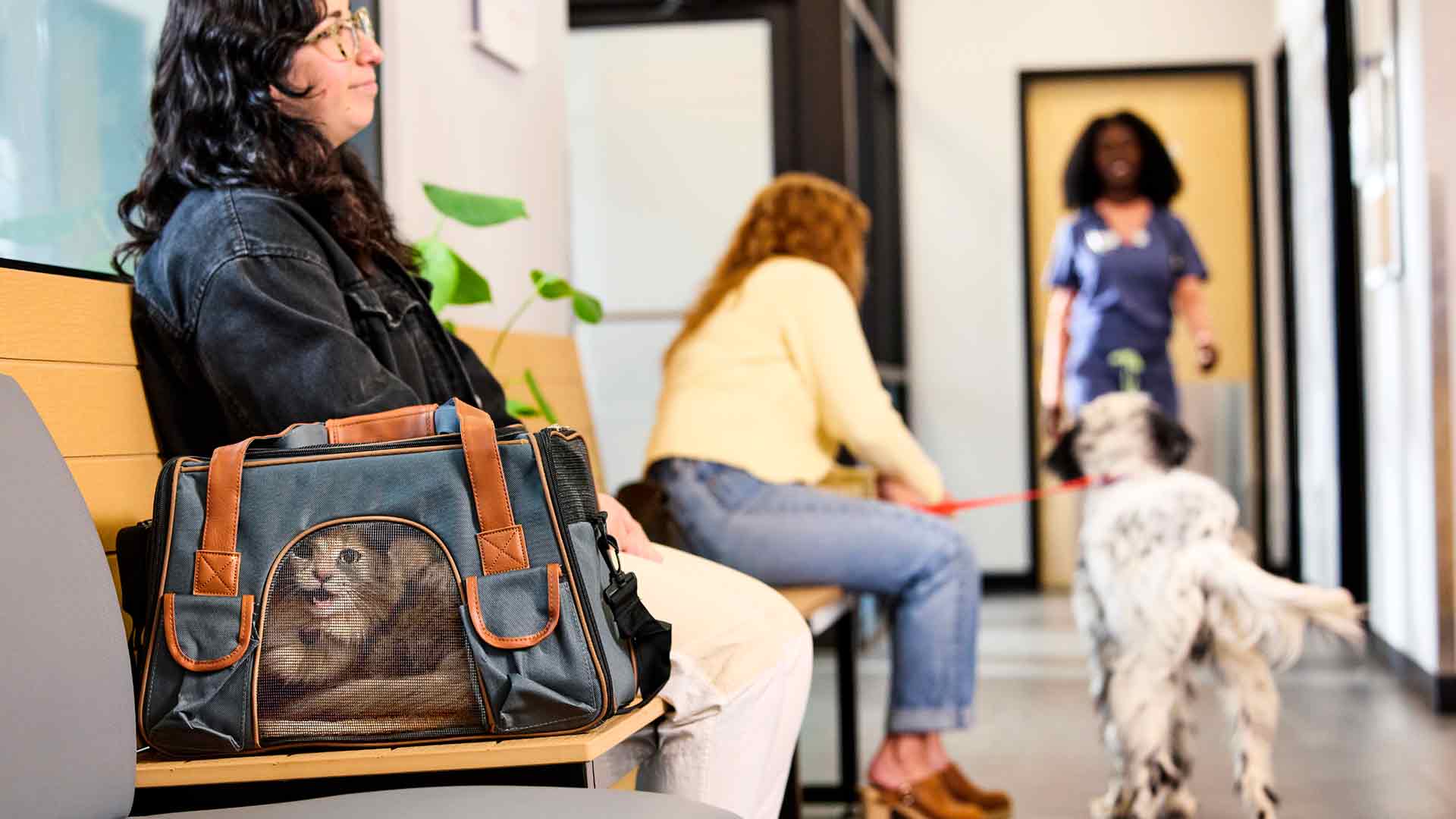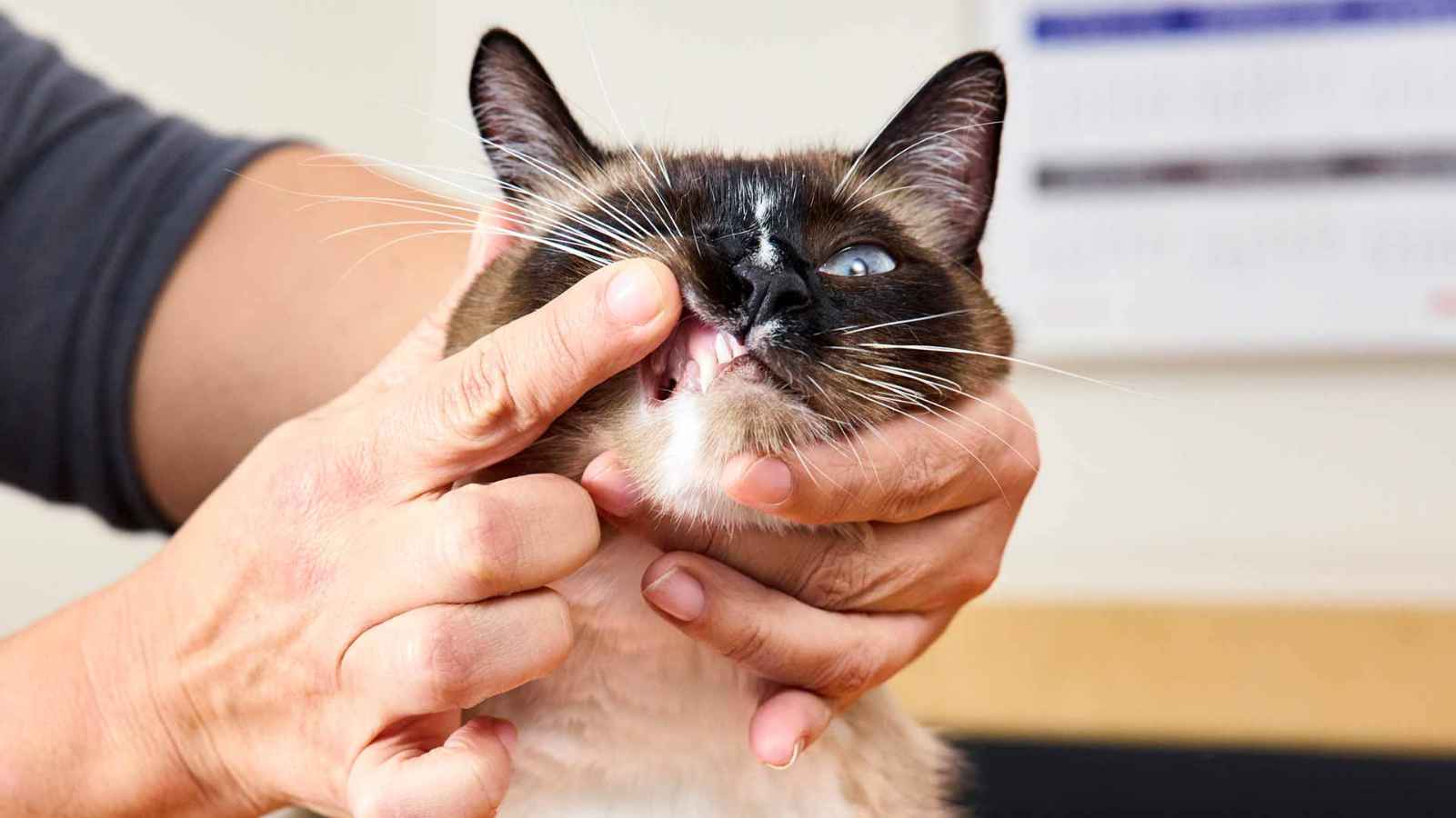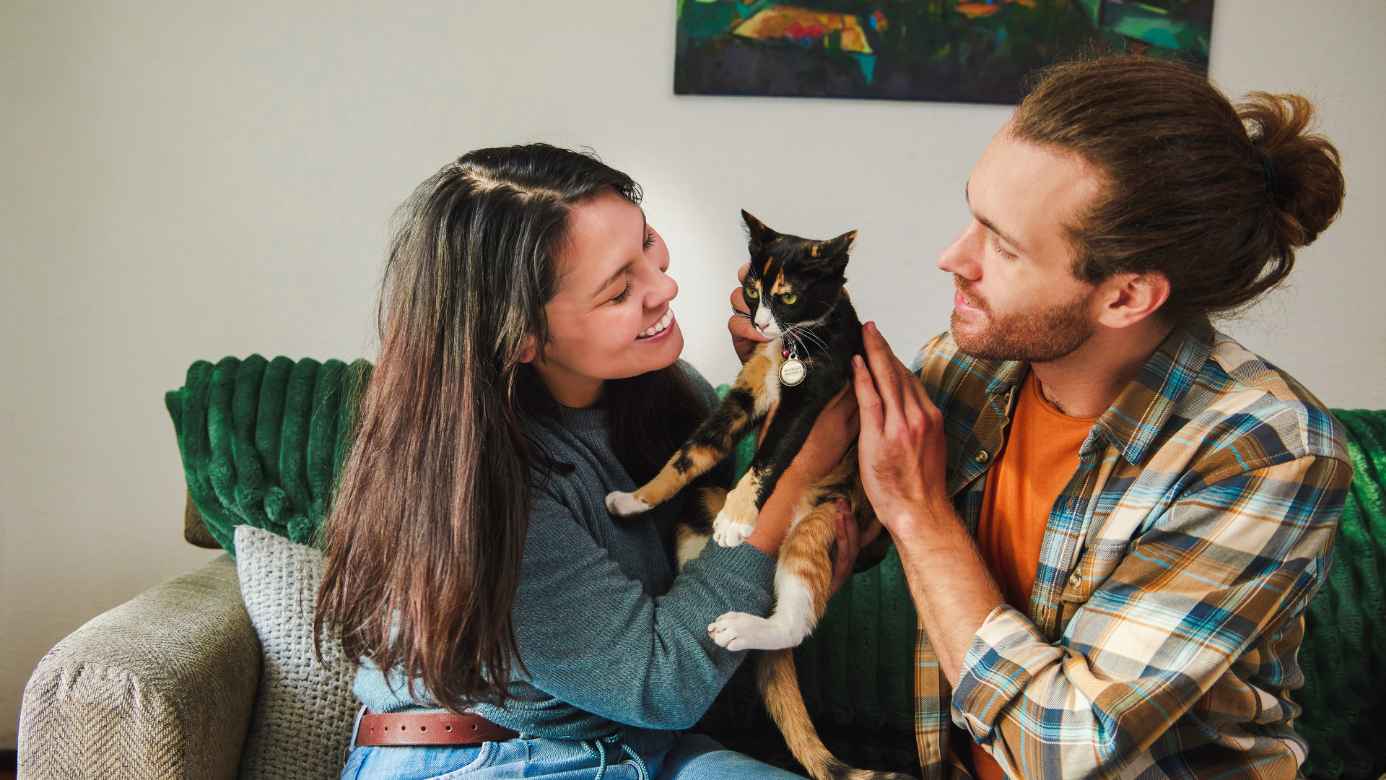brushing up on oral care: the importance of brushing your pet’s teeth
In a recent episode of Banfield Pet Hospital’s podcast, Not Just Fluff, we spoke to Dr. Kate Hilsenteger, area chief of staff for Banfield, all about the importance of oral care for your pets. We covered a lot of ground in our conversation, and one of the biggest takeaways is the importance of brushing your pet’s teeth. Yes, you should be brushing your pet’s teeth!
Humans brush every single day, and since our pets can’t do that themselves, we need to take matters into our own hands as their loving caretakers. Chances are, you’re already brushing your cat’s or dog’s fur on a regular basis, so adding some teeth brushing to their care routine is a great first step.
“Brushing every day would be the ultimate form of prevention. At the same time, it won't remove the need for annual dental cleanings. I like to tell people, we brush twice a day, we floss, we use mouthwash, we chew gum, and we still go to the dentist twice a year, ideally to get our teeth cleaned by a professional hygienist. Whereas our pets, by and large, never brush their teeth. And I might get the opportunity to do a first dental cleaning at four years of age for some pets, and that's after they've had those permanent teeth for three and a half years without brushing. So the more we can do at home, the better. So brushing, dental chews, dental rinses.”
- Dr. Kate Hilsenteger
How to brush your pet’s teeth
A foundation of good home brushing, complemented by regular professional dental cleaning, can help your pet’s teeth and gums stay happy and healthy. For those of you who have never tried to brush your pet’s teeth, don’t worry, you can still make an impact if you start now.
While it may seem like an intimidating task to convince your furry BFF to even let you touch their chompers, we have you covered, with bite-sized tips and advice to incorporate teeth brushing into their routine.
Let’s dive in, brush first.
Take it slow
Before you start with the actual brushing, it’s a good idea to let your pet get used to human hands in and near their mouth. This process takes some patience, and at any point, if your pet shows signs of aggression, give them (and yourself!) a break, and try again when they are more relaxed.
Start by just getting them used to you touching their mouth; be generous with praise and head scratches. And maybe share some treats when you’re done.
Once your pal is used to your fingers touching their lips and teeth, try gently lifting the sides of the top lip to examine the lip-side of their teeth. If they still seem relaxed, go ahead and do the same with the bottom lip.
After your examination, lightly run your finger along your pet’s teeth and gums. This will help them acclimate to the feeling of your fingers in their mouth and prepare them for brushing.
Bite-sized tip: Get your pet used to a toothbrush by putting some peanut butter on it and letting them lick it off
“I definitely think of it as picking a time of day that you can commit to trying this. And I tend to have people start with a little finger brush that's going to be just not as intrusive and less risk of bonking them in the back of the mouth or anything. I have people focus on what I call the lip-side of the teeth. So the part of the teeth that touches the lips and the cheeks, most of the pathology I find is on the lip-side. And so I have people start by trying to brush the lip-side of the teeth.” - Dr. Kate Hilsenteger
Tools of the trade
Ready to start brushing? Here’s what you’ll need:
- Pet toothpaste
- Pet toothpaste comes in lots of flavors your pet will appreciate, which makes it slightly easier for them to cooperate come teeth brushing time.
- DO NOT use human toothpaste, which can be toxic to pets. If you’re unsure what to use, ask your veterinary team.
- A pet toothbrush, or a piece of gauze
Bite-sized tip: When it’s time to brush, recruit a pet-loving human friend to help hold and comfort your wiggly pet.
It’s brushing time
Time for the fun part!
Remember those yummy pet toothpaste flavors? Let your pet taste a bit of the pet toothpaste before you begin.
Use your finger, a piece of gauze, or a pet toothbrush to gently rub the toothpaste in a circular motion on the outside, or lip-side, of the teeth.
Don’t worry if you can’t brush every tooth the first time! Start with a few teeth, and slowly add more each time to build the habit.
Bite-sized tip: dental treats can be a great part of a full oral care routine to help prevent bacteria buildup on teeth, but they do not replace brushing.
“My big ask is, brush the lip-side once a day and really start slow. So you're starting with that finger brush and just trying to get in there and get the pet to accept brushing just a little bit of the teeth and positive encouragement, positive rewards. And then maybe it takes a month to get to a place where you can comfortably have that pet sit there and brush for one to two minutes and get all of that food residue off so we don't have tartar formation.”
- Dr. Kate Hilsenteger
Professional cleanings
While regular brushing, dental chews, and rinses are all healthy steps you can take at home to encourage oral health, professional dental cleanings are part of your pet’s oral care journey too.
During this procedure, your Banfield veterinary team will clean above and below the gumline, checking your pet’s oral health and removing tartar, which can lead to painful gum inflammation, tooth loss, and more. It’s a thorough process, and an important component of a full-fledged dental plan.
What to expect
Your Banfield vet will start with an oral exam to look for anything other than dental tartar. For your pet’s professional cleaning, the visit will start with anesthesia, a process veterinary pros are extensively trained for.
“We have a lot of anesthesia safety standards because we don't take anesthesia lightly. And it is something that requires extensive training for the veterinarian, for the technicians, for the vet assistants. Every pet that comes in for a routine cleaning with me or any doctor at Banfield, or any veterinarian anywhere, we'll have protocols for what's acceptable to find on a physical exam. We do blood work, we have what we call stops and critical stops on all of their lab results that day. We evaluate trends and their medical history and we decide, ‘Is this pet safe for anesthesia?’ And then once we have them under anesthesia, we have rigorous standards for pre-op checklists, for safety, inter-op monitoring, and post-op recovery. And so I would say the idea of safety standards around it is incredibly important for the veterinary industry. And I think that's where I feel like Banfield's done a lot to really raise the bar on what is safe and what are the best practices.”
- Dr. Kate Hilsenteger
Bite-sized tip: During a professional dental procedure, your Banfield veterinary team constantly monitors your BFF’s vitals to ensure they are safe and comfortable.
A typical professional dental cleaning includes ultrasonic dental cleaning, tooth polishing, and hand scaling above and below the gumline. If your vet sees anything that needs more than just a cleaning, you may need to make an additional appointment.
Final thoughts
All in all, taking a peek inside your furry friend’s mouth is a great first step on the journey to oral health, and your Banfield veterinary team is here to support. For more tips from Dr. Kate Hilsenteger on dental hygiene, and fun facts about pet teeth, check out the full podcast episode.
 Mites and mange
Mites and mange Podcast - Not Just Fluff
Podcast - Not Just Fluff

